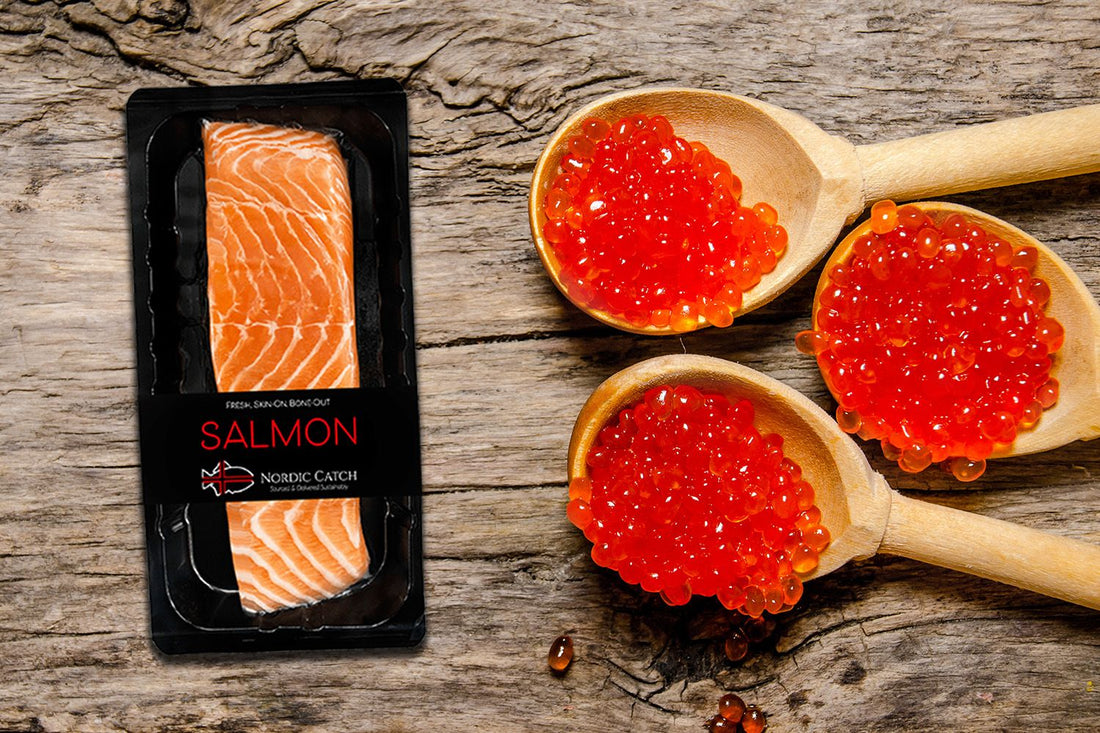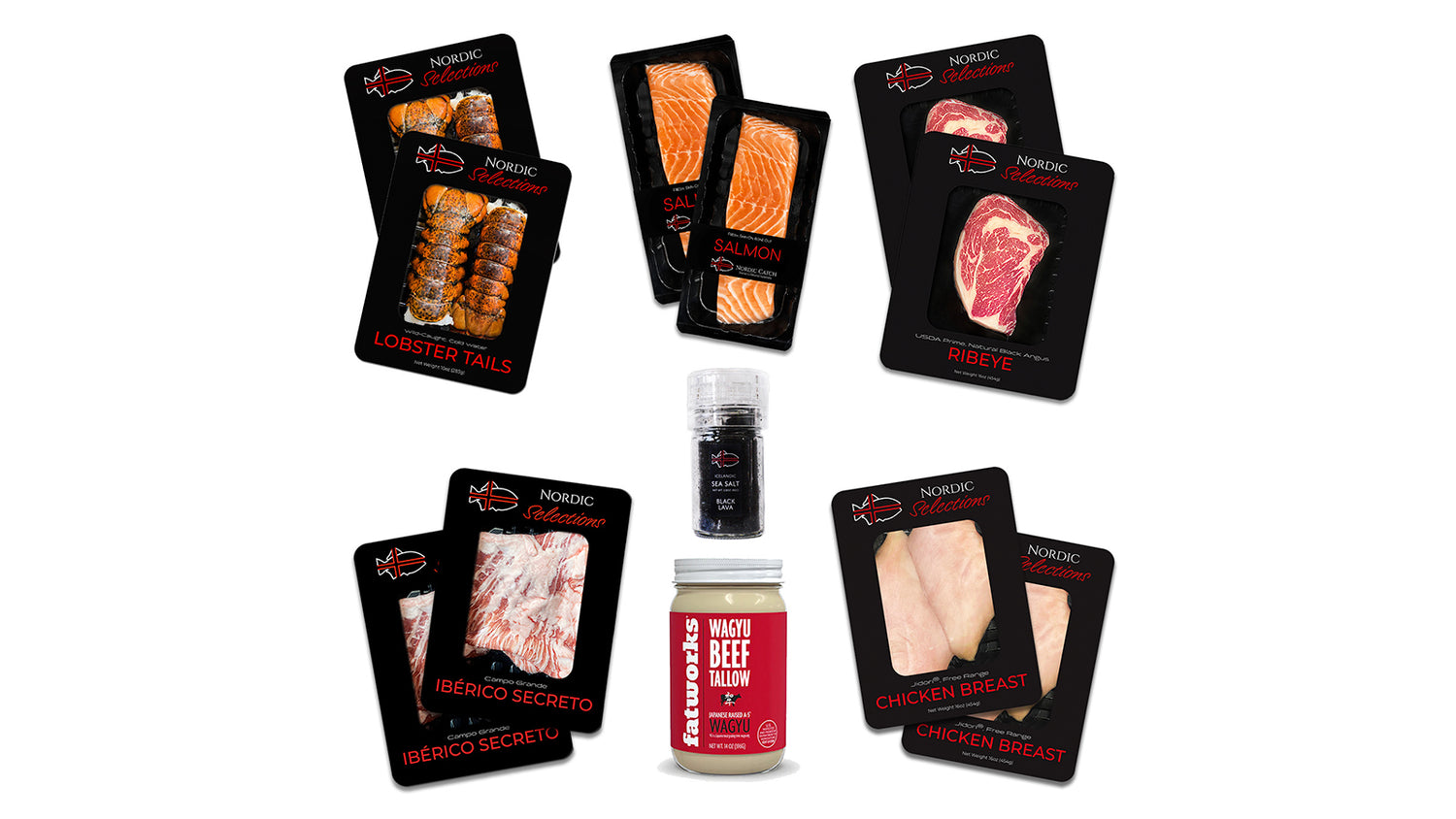
How to Choose Sushi-Grade Seafood
Choosing the best sushi-grade seafood can seem daunting. From understanding freshness to ensuring safety, there's a lot to consider. This guide will help you navigate these complexities, ensuring you're well-equipped to make informed choices as you embark on this culinary journey.
What Does Sushi-Grade Seafood Mean?
People often use the term "sushi-grade" in the seafood industry. Still, it's crucial to understand that it lacks a formal regulatory definition. Based on their handling practices, retailers and suppliers use this label to indicate that the seafood is safe for raw consumption. However, there's no official grading system, meaning you must rely on trustworthy suppliers to ensure quality.
What Do the FDA Guidelines Say?
The FDA mandates that most wild fish intended for raw consumption be frozen to eliminate parasites. This requirement is crucial for species like salmon, prone to parasitic infections.
Freshwater fish are particularly susceptible to parasites like tapeworms, making them unsafe for raw consumption unless appropriately frozen. While farmed salmon is an exception, as it's often raised on a parasite-free diet, ensuring that any fish intended for sushi has been appropriately handled and frozen to mitigate these risks is vital.
Shop high-quality frozen fish in bulk with our latest Nordic Catch offering.
The FDA recommends freezing sashimi salmon and other fish at -4°F (-20°C) for seven days or flash freezing it at -31°F (-35°C) for 15 hours. This process kills parasites that might otherwise pose a risk when consuming raw fish. If you plan to cook frozen fish, you must thaw it properly before cooking to eliminate potential bacteria.
An important note, the FDA also allows fish to be treated with carbon monoxide, a practice that alters the color of the fish to extend its shelf life. So take what the FDA says with a grain of salt, in the interest of your best health.
Species-Specific Risks
Different fish species come with varying levels of risk regarding parasites and bacterial contamination. Tuna, for instance, is generally considered safer for raw consumption due to its low incidence of parasitic infection. However, other species, like cod, are more prone to parasites and require more stringent handling and freezing practices.
Safe Handling & Storage
The freshness and safety of sushi-grade fish depend heavily on how the suppliers handle and store it. Immediately after capture, it's essential that suppliers bleed, gut, and ice the fish to prevent bacterial growth and parasite migration. If you plan to buy sushi-grade fish, ensure it's appropriately stored below 40°F (4°C). This prevents bacterial contamination, which you can't permanently eradicate by cooking or freezing the seafood.
Does Superfreezing Fish Preserve Its Quality?
Some high-end seafood suppliers use "super freezing" to rapidly freeze fish at ultra-low temperatures. While this method effectively kills parasites, we believe it sacrifices some of the quality of fresh fish. When you consume fresh fish that the supplier has sourced sustainably and handled safely, you can always be sure you're enjoying it at its peak taste, color, and nutritional value.
Cultural Practices & Sushi Safety
In places like Japan and Iceland, where raw fish consumption is a cultural norm and people place a premium on high-quality fish, cases of parasitic infection are rare. This reflects both countries' high standards in fish handling and preparation.
These practices contrast with freezing regulations in other countries, where raw fish consumption is less common. Understanding these cultural differences can provide insight into suppliers' standards and practices to ensure you receive the highest-quality sushi-grade fish.
5 Popular Sushi-Grade Fish
Here are some of the most common types of fish chefs use in sushi, along with tips on how to prepare them:
- Tuna: Known as the "King of Sushi Fish," tuna offers a meaty flavor with a velvety texture. Bluefin tuna is highly prized but expensive, while yellowfin tuna and albacore provide more affordable alternatives.
- Salmon: Salmon is rich in omega-3 fatty acids and has a buttery texture that pairs well with sushi rice. Ensure it's been adequately frozen to eliminate parasites.
- Yellowtail (hamachi): This fish has a mildly sweet flavor and soft texture, making yellowtail a versatile option for sushi.
- Snapper: With a lean and firm texture, snapper has a subtle sweetness that complements other ingredients in sushi rolls.
- Shellfish: Shrimp, scallops, and squid are also popular choices, offering unique textures and flavors that can enhance a sushi experience.
When selecting whole fish for sushi at home, look for signs of freshness, such as bright eyes, firm flesh, and a clean, ocean-like smell. Fileting the fish at home is also recommended to ensure it meets your personal safety standards. Fileting fish yourself allows you to inspect it closely for any signs of parasites or spoilage.
Preparing & Storing Sushi-Grade Seafood at Home
Having the right tools is essential if you're preparing sushi at home. A sharp knife, preferably a Yanagiba or Deba, is crucial for making precise cuts that preserve the fish's texture. When slicing for sashimi or nigiri, use smooth, single cuts to maintain the integrity of the fish.
To maintain the quality of sushi-grade seafood:
- Store the fish in the refrigerator at temperatures between 32°F and 39°F.
- If you're not consuming it immediately, consider freezing it.
- Remember to defrost the fish slowly in the fridge to maintain its texture and safety.
Frequently Asked Questions
What is a safe seafood choice for sushi?
Sushi requires using certain types of safe seafood. Specifically, avoid freshwater fish such as yellow perch or brook trout. Instead, opt for saltwater species like tuna, which has the lowest risk of foodborne illness. Cooked seafood such as shrimp and crab are also good options.
How do you know what fish to buy for sushi?
It is crucial to choose sushi-grade fish designated for raw consumption. The most commonly used fish include tuna, salmon, yellowtail, snapper, and mackerel.
What is the most mild fish for sushi?
If you're new to sushi, consider starting with milder fish. Tuna, known as tekka in Japan, has a tender, delicate flavor. Salmon, or sake in Japanese, offers a buttery and smooth taste.

